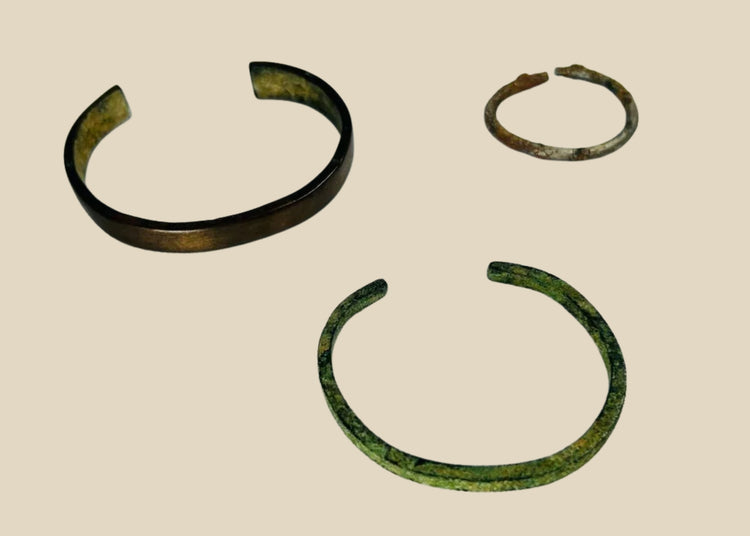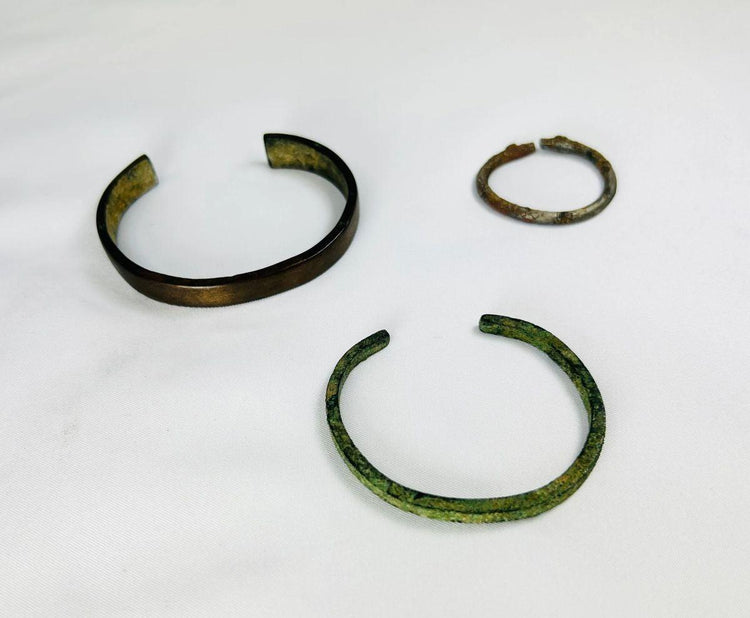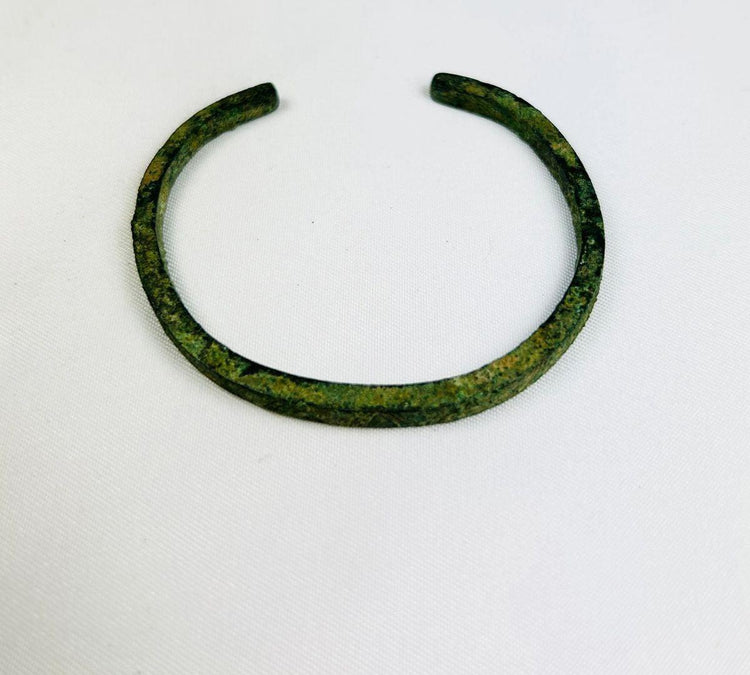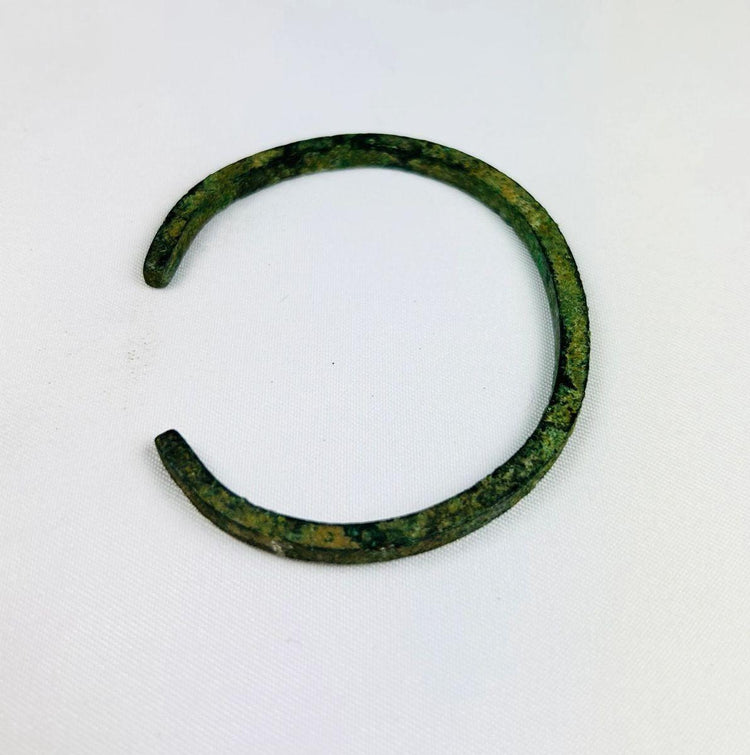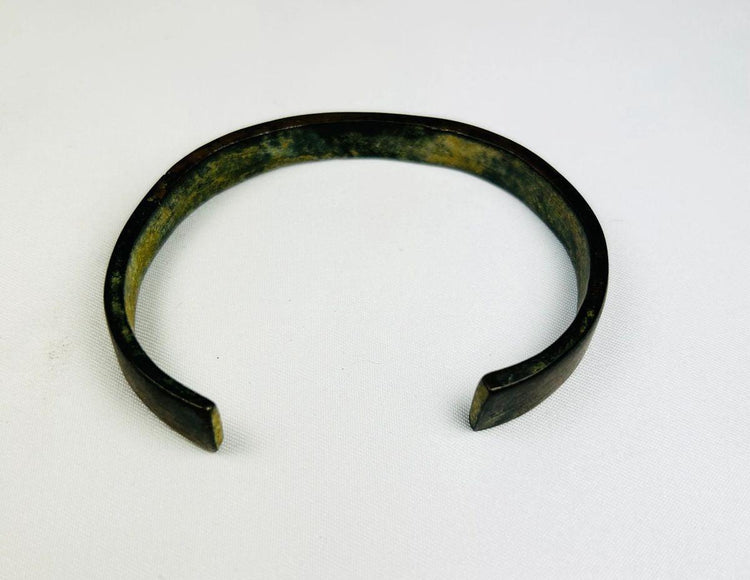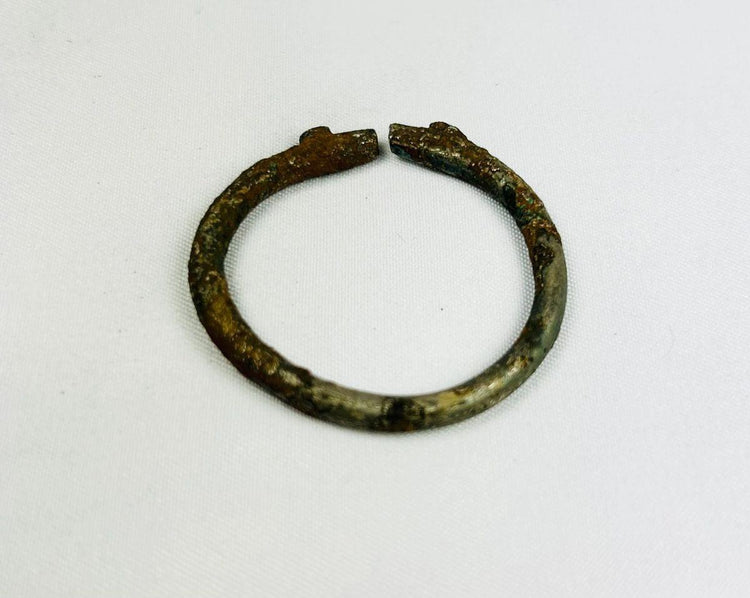Ancient Bronze and Iron Bracelet Set | 1st to 3rd Century AD
Description
More
Less
Historical Context & Origin
Region: Near East (Mesopotamia to Levant or Anatolia)
Material: Bronze and iron
Period: Bronze to Iron Age (circa 6th millennium BCE – 7th century CE)
Description
This rare set of three ancient bracelets reflects the artistry and metallurgical development of Near Eastern societies. The group includes a broad bronze cuff with a faint green patina, a slender bronze bracelet with an elegant oxidized surface, and a rugged iron bracelet with a dark, textured finish. Together, these pieces represent both the decorative traditions and the cultural symbolism of personal adornment in antiquity.
Features
- Bronze cuff bracelet with open-ended design and faint green patina
- Delicate bronze bracelet with green oxidation and worn elegance
- Iron bracelet with darker patina and textured surface, reflecting later metallurgy
- Distinct variation in design and material, highlighting cultural diversity
Cultural Significance
Bracelets in the ancient Near East were more than adornments—they were expressions of status, spiritual belief, and cultural identity. Bronze was widely used during earlier periods for its durability and luster, while iron became more common in later times with the advent of the Iron Age. Worn by men and women alike, such bracelets often carried ritual significance or denoted social standing within their communities.
Condition
Well-preserved with patinas ranging from green to dark brown, each bracelet exhibits authentic surface wear consistent with age. The contrasting materials and conditions enhance their historical character.
Dimensions
Largest cuff diameter: 5.5 in
Other bracelets: varying smaller sizes
Age
Bronze to Iron Age (circa 6th millennium BCE – 7th century CE)
Description
Historical Context & Origin
Region: Near East (Mesopotamia to Levant or Anatolia)
Material: Bronze and iron
Period: Bronze to Iron Age (circa 6th millennium BCE – 7th century CE)
Description
This rare set of three ancient bracelets reflects the artistry and metallurgical development of Near Eastern societies. The group includes a broad bronze cuff with a faint green patina, a slender bronze bracelet with an elegant oxidized surface, and a rugged iron bracelet with a dark, textured finish. Together, these pieces represent both the decorative traditions and the cultural symbolism of personal adornment in antiquity.
Features
- Bronze cuff bracelet with open-ended design and faint green patina
- Delicate bronze bracelet with green oxidation and worn elegance
- Iron bracelet with darker patina and textured surface, reflecting later metallurgy
- Distinct variation in design and material, highlighting cultural diversity
Cultural Significance
Bracelets in the ancient Near East were more than adornments—they were expressions of status, spiritual belief, and cultural identity. Bronze was widely used during earlier periods for its durability and luster, while iron became more common in later times with the advent of the Iron Age. Worn by men and women alike, such bracelets often carried ritual significance or denoted social standing within their communities.
Condition
Well-preserved with patinas ranging from green to dark brown, each bracelet exhibits authentic surface wear consistent with age. The contrasting materials and conditions enhance their historical character.
Dimensions
Largest cuff diameter: 5.5 in
Other bracelets: varying smaller sizes
Age
Bronze to Iron Age (circa 6th millennium BCE – 7th century CE)
You May Also Like






















